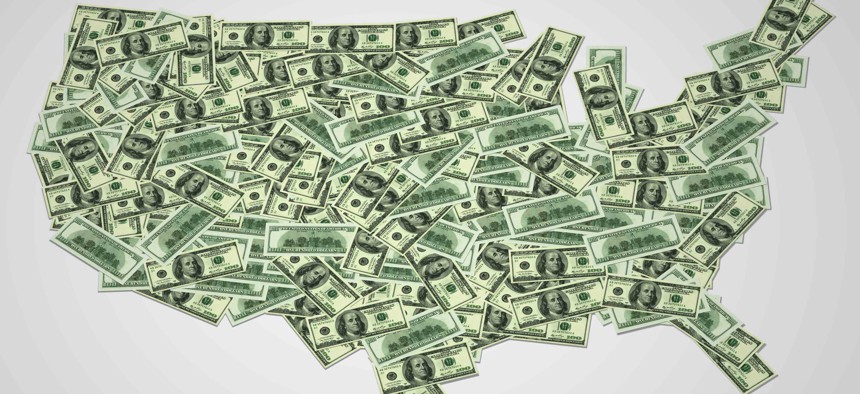Analysis: All 50 States Experience Historic Personal Income Growth in 2020

iStock.com/Nelson_A_Ishikawa
The rise in personal incomes nationwide is the biggest in 20 years, and because of the pandemic, can largely be attributed to unprecedented government assistance, according to a Pew report.
Nationally, Americans’ personal income increased 4.9% in the fourth quarter of 2020, the largest rise since 2000, according to new analysis based on federal data by the Pew Charitable Trusts.
“Personal income” measures all income received by a state’s residents from various sources. The Pew study examined Americans’ personal income from wages and salaries, business profits, government assistance and any extra compensation like employer-sponsored health care.
The growth in personal incomes can mainly be attributed to government assistance during the Covid-19 pandemic, the research notes. The study also points out that combined state and federal government assistance (aid, unemployment benefits, other public assistance) increased 35% in 2020, which was the largest growth since the 1940s.
According to the analysis, Arizona and Montana recorded the top personal income growth at 7.1%, followed by Utah (6.9%), Idaho (6.8%), Rhode Island (6.4%) and Maine (6.3%).
South Dakota had the largest growth rate increase in the sum of all residents’ personal income, at 6.3%, followed by Montana (5.7%), Idaho (5.6%), Nebraska (5.3%) and Utah (4.8%).
With a growth rate of -1.2%, Alaska had the biggest decline in personal income during the fourth quarter. Wyoming (-0.9%), Hawaii (-0.4%) and New York (-0.1%) were the other states with negative growth rates during the period.
When it comes to the personal income growth rate before the pandemic, from 2007 to 2019, Utah and North Dakota led all states. Connecticut and Mississippi saw the smallest growth during that same 12-year span, the Pew study shows.
The analysis points out that without historic government support, 41 states would have experienced losses in total personal income last year. However, some states were in a better position than others to confront the public health emergency and the recession it caused. As well, a rise in tax revenue in 2018 and 2019 allowed many states to add to their rainy day funds and address the loss in tax revenue last year.
Pew’s analysis is based on the U.S. Bureau of Economic Analysis’ Personal Income by State data series, accessed March 24, and is adjusted for inflation. To read more analysis by Pew click here.
Brent Woodie is an associate editor at Route Fifty.
NEXT STORY: NLM Pillbox put out to pasture





